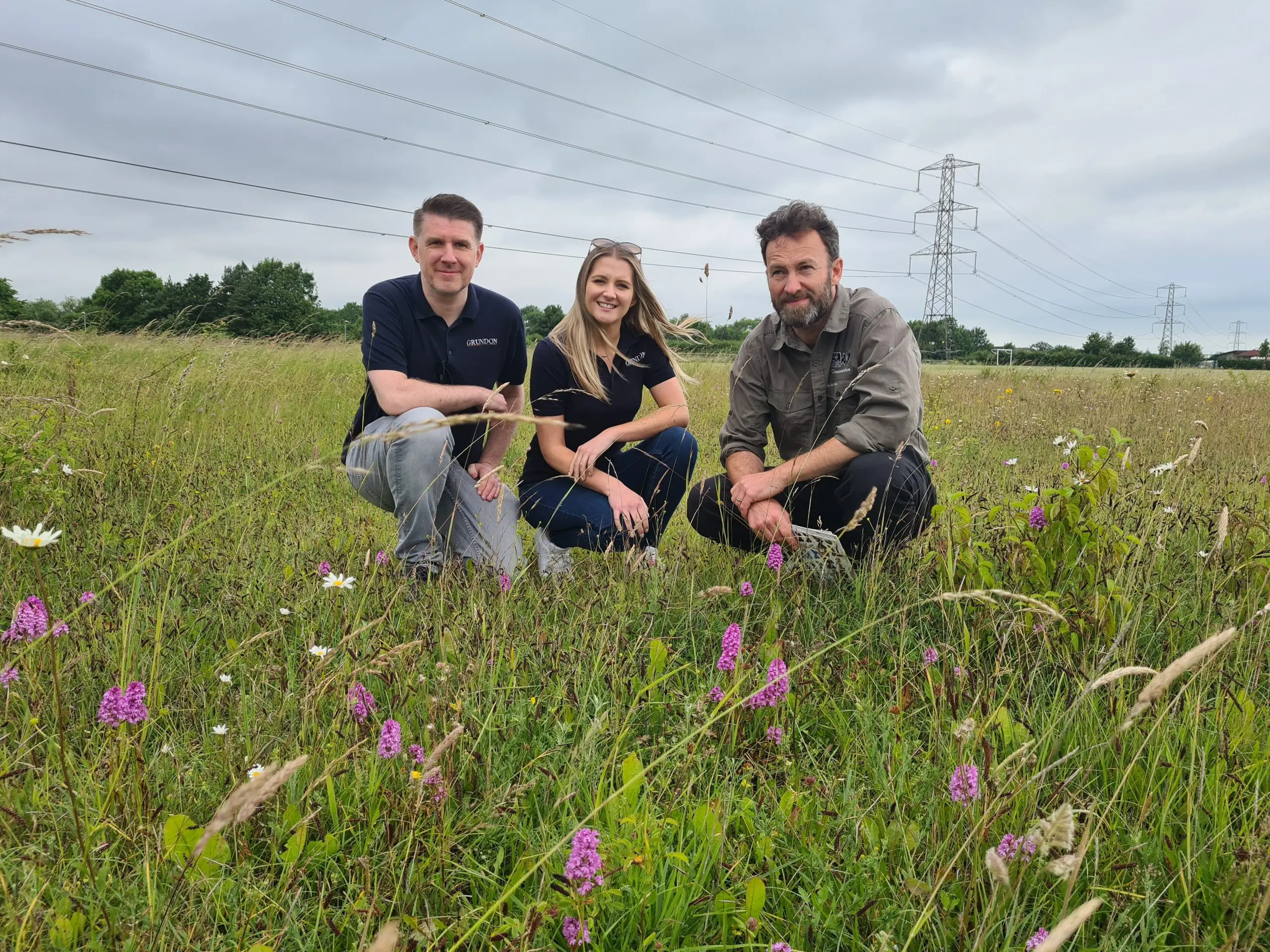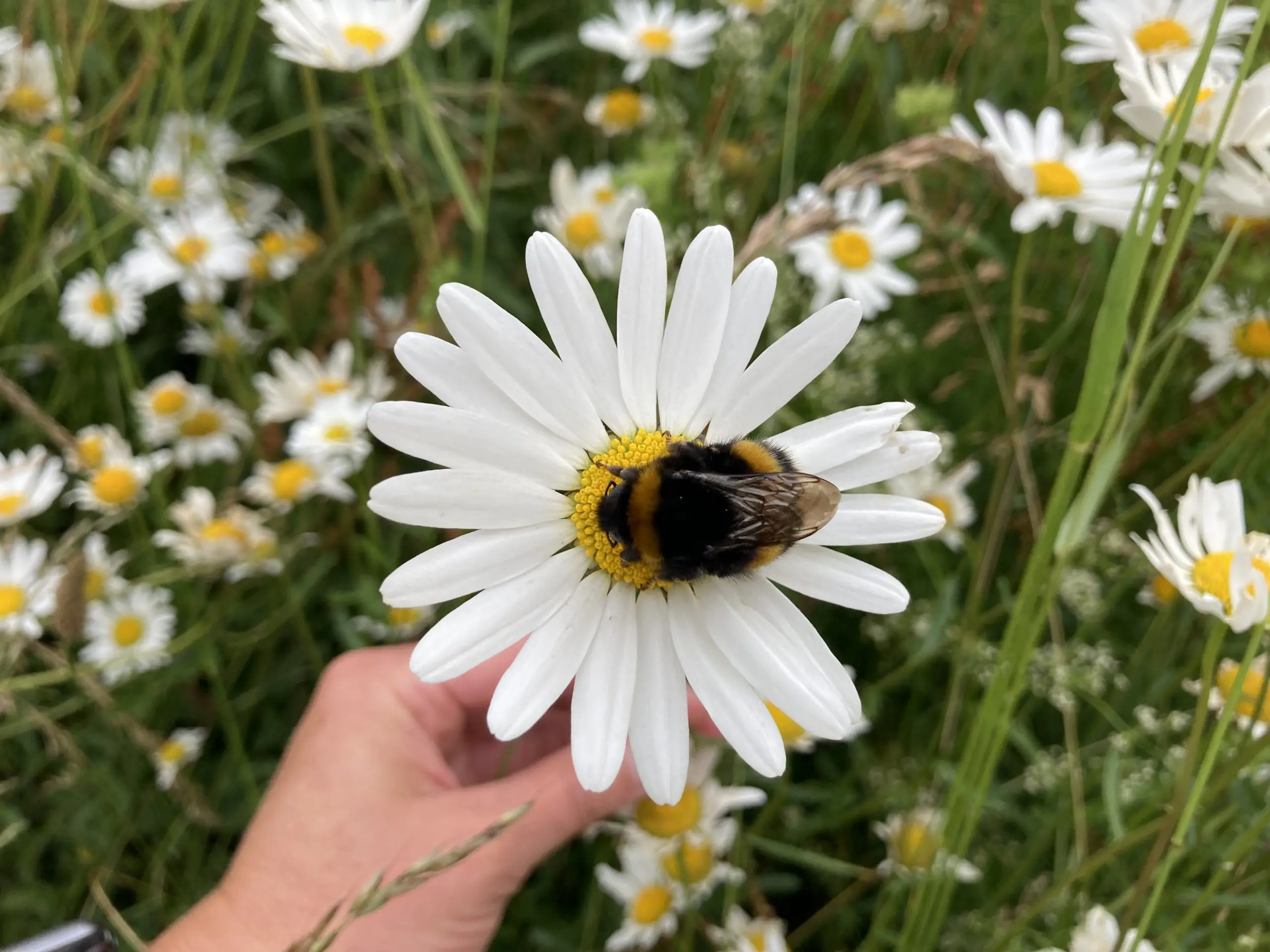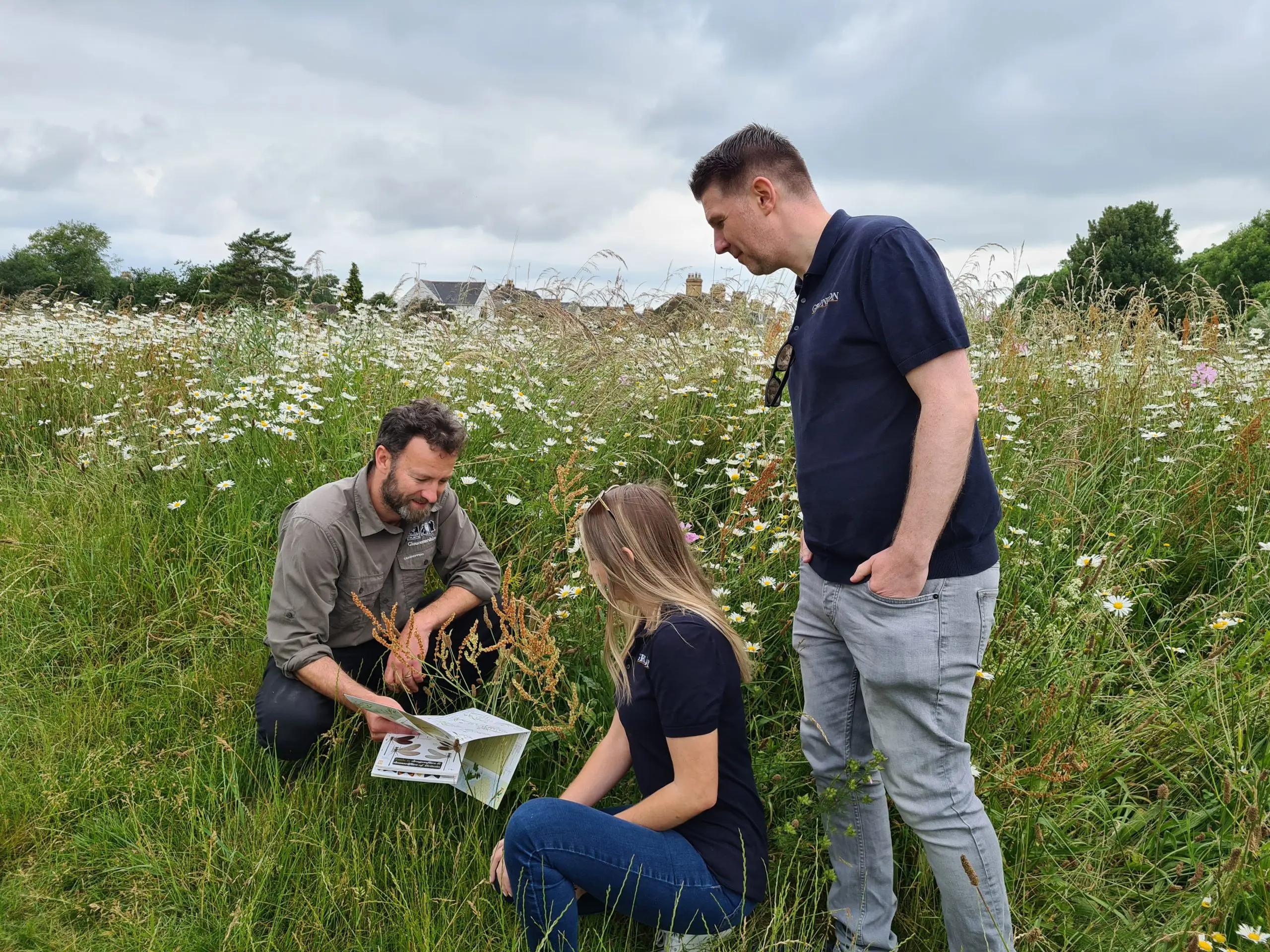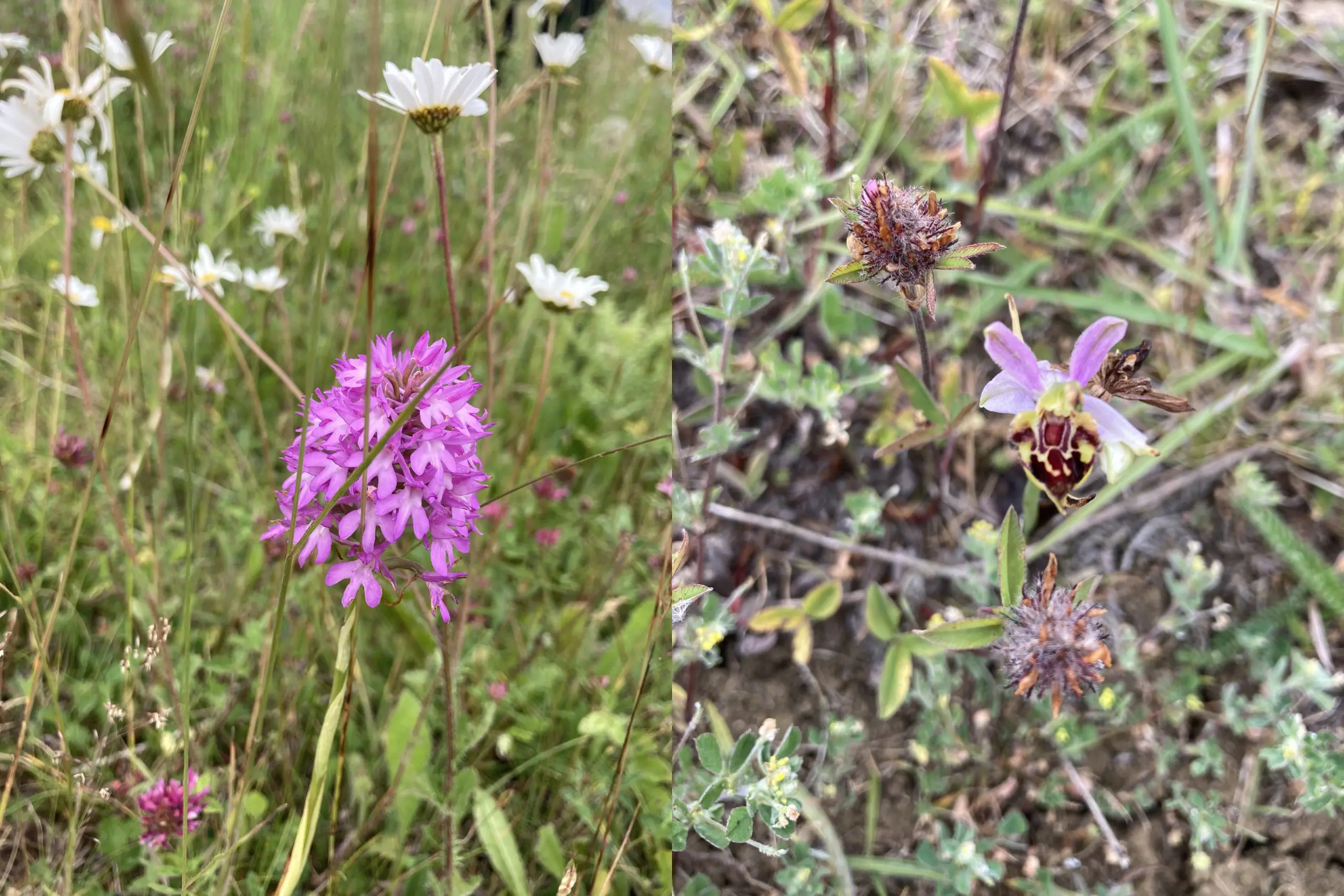After two years of work by Gloucestershire Wildlife Trust, the true beauty of Cirencester’s wildflower meadows is being revealed to the town’s residents and visitors.
The success of the project was due to £25,000 of funding from waste management company Grundon through the Landfill Communities Fund.

The funding enabled Gloucestershire Wildlife Trust to sow the meadows with grasses and wildflowers and build important infrastructure, including a small footbridge at Victoria Road and a carved bench at City Bank in the town.
Anthony Foxlee-Brown, Head of Marketing and Communications at Grundon, said: “We hope this investment in Cirencester’s meadows will encourage more people to use them as well as helping to boost the numbers of birds and insects.”
Cirencester’s City Bank and Victoria Road are two of seven locations around the town enjoying improved biodiversity – which pollinators love – which are all part of the Wildlife Trust’s Cirencester Meadows Project.
In the first year, poppies grew in abundance in the Victoria Road meadow. This year, species such as ox eye daisies, birds foot trefoil, salad burnet and wild carrot (also commonly called cow parsley or Queen Anne’s Lace) are thriving.

Project Manager at Gloucestershire Wildlife Trust, Will Masefield, said: “What has been fascinating about all these meadows is how they’ve changed from month to month and year to year. They have all become important, visual and ecological features within the town.
“Management of meadows is really important. Wildflower meadows provide shelter and food for important pollinators including bees and many other insects.”
A healthy meadow can become home to more than 100 species of wildflowers, which in turn supports other wildlife. For example, the flowers of the yellow bird’s foot trefoil (which look like clusters of tiny slippers), is a food plant for 160 species of insects, which in turn support small mammals and birds.

Returning an unloved meadow back to a more natural state takes patience, and the work will be wasted if on-going management isn’t undertaken. Cirencester Town Council has adopted Gloucestershire Wildlife Trust’s recommendations on the management of the meadows. The council will be cutting the meadow at the end of the season to stop nutrient levels building and favouring some species, and to stop dead vegetation blocking next year’s growth.
To do this cutting and removing work, Gloucestershire Wildlife Trust has provided the council with a flail collector (a multi-purpose machine for use with a tractor for ground maintenance) to manage these extensive wildflower areas, including the meadows at Kingshill in the town, which are also thriving – and where orchid species can be found.
Anthony Foxlee-Brown at Grundon added: “We take our responsibilities to the local environment very seriously. Removing and managing household and commercial waste is our day-job. Supporting important community projects through organisations such as Gloucestershire Wildlife Trust, which we have done for more than 10 years, is how we can make an active, positive and ongoing investment in the local environment.”

During their 25 year partnership, Grundon Waste Management and Gloucestershire Wildlife Trust has provided over £3 million from the Landfill Communities Fund to invest in Gloucestershire’s wildlife and wild places – from bird hides, boardwalks, tree planting and meadow creation, to fences for livestock, volunteer tools, educational and visitor facilities.
